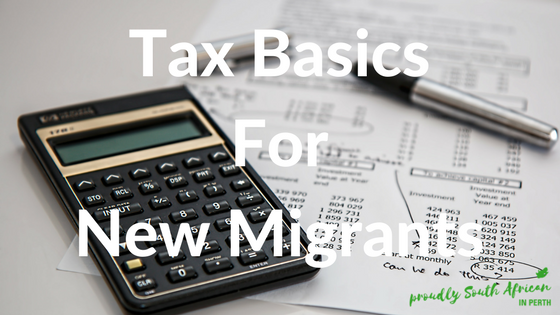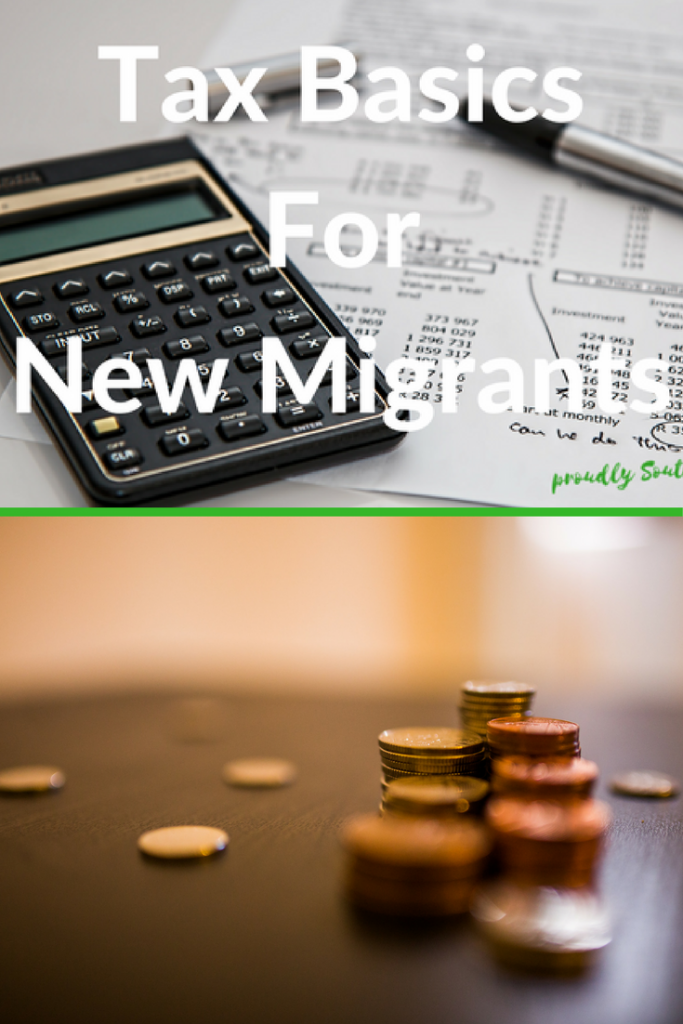One of the most daunting things about moving country is learning a whole new tax system. The Aussies seem to like to do everything differently and the tax system is no different! I asked Gillian from Simple Accounting Solutions to give my readers a brief overview of some of the things you need to know, so here is her roundup of Australian tax basics for new migrants.
Having moved from South Africa to Australia myself 5 years ago, I understand that moving countries and giving up everything that is familiar can be a double edged sword – an exciting new adventure, but one that is both daunting and at times overwhelming.
I remember even the basic things like grocery shopping or finding my way around the city were unnerving, let alone navigating complex new tax laws To take away some of that overwhelm – here are some of the Australian tax basics that all new migrants need to know.
Financial Year
In Australia the financial year runs from 1 July to 30 June of the following year. On arrival, as an individual, you will need to apply for a Tax File Number (TFN). If you are a salary and wage earner – your employer will withhold tax from your salary to pay over to the ATO on your behalf. You can elect to use the “tax free threshold”.
Payment Summary
You will receive a Payment Summary (like an IRP5) in July which shows the annual earnings and taxes paid.
Superannuation
Generally your employer is required to contribute to a Superannuation fund – what we call a pension fund – of your choice at 10.5% (current, increasing to 11% from 1 July 2023) of your ordinary earnings. You can make additional contributions each year as well – up to a certain amount before attracting additional tax – check with an accountant about your personal contribution limits.
Tax Rates
Income received by individuals is taxed at progressive rates from 0% to 45%, plus a Medicare levy of up to 2%, and a Medicare levy surcharge of 2% (if you earn above certain thresholds and do not have sufficient private medical health cover).
You can lodge your own tax return, due by 31 October. You’ll need a myGov account linked to the ATO to lodge online using myTax (like SARS e-filing).
ABN
If you are conducting a business in Australia you will need an Australian Business Number (ABN) which is a unique 11 digit number that identifies your business. The ABN needs to be on invoices you issue.
You may apply for an ABN for free at any time through the Australian Business Register website. If you are a sole trader – the ABN will be issued in your name. You will need to register a business name with ASIC if you would like to trade under a name different to your own name. You may have multiple business names attached to a single ABN.
Company Rules
If you want to trade as a company – you will need to establish a company. If the company name is your trading name you do not need to register a business name. Income derived by companies is currently taxed at a flat rate of either 30% or 25% depending on annual turnover. Terms you need to know are GST, BAS and PAYG.
GST
GST (Goods and Services Tax) is a tax based on the transactions you make in your business — that is, the sales and purchases. There are some GST-free sales and purchases but in general the GST is 10% of most of your business transactions. You need to register your business for GST if you currently earn gross sales of $75,000 or more in a financial year.
When your business is registered for GST you need to complete a BAS (Business Activity Statement) annually, quarterly or monthly, depending on the business reporting obligations.
Employing Staff
If you employ staff, then PAYG withholding must be deducted from the gross wages and remitted to the tax office via the BAS or IAS each quarter or month, depending on the amount of wages you pay your staff.
BAS
When your business makes a profit, and you start paying tax on this profit, then PAYG income tax instalments will be payable via the BAS (business activity statement). Note: Once you lodge your first business tax return, your business will be entered into the PAYG income tax instalment system, and you will need to pay tax on your business income in the year that you earn it via the BAS each quarter.
The tax system in Australia runs from 1 July to 30 June, and the quarterly periods are: 1 July to 30 September, 1 October to 31 December, 1 January to 31 March and 1 April to 30 June each financial year.
That’s it in a nutshell. Tax 101 in Australia. Of course – I have ignored things like capital gains, dividend franking credits, fringe benefit taxes and state payroll taxes… Sigh.
Thanks Gillian for this overview of Australian tax basics for new migrants! You can get in touch with Gillian at gillian@simplesolutionsaccounting.com.au if you need an accountant that can both assist and educate you at the same time.
Enjoyed this? Check out some of my other blogs like I Want To Migrate To Australia: Where Do I Start and How Does Childcare Work In Australia?.







No Comments